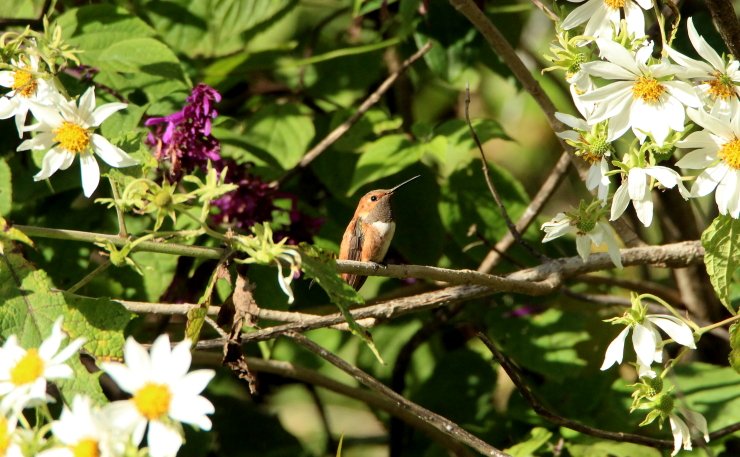
Those of us who were raised in the four-season north (here in Michoacán one could define, at the most, three seasons) tend to think of avian migration in terms of seasonal temperatures. For us, it’s all about birds moving north during the warm season to breed, and south to escape the winter cold.
I suspect that for hummingbirds, temperature is not the only factor. Those that move south to Mexico in the fall come as much for the abundance of winter food sources, as for winter warmth. Everything blooms here at the end of our summer monsoon rains, so central Mexico and Central America offer a fantastic and continuous banquet to nectar-feeders during the fall.
I had already visited my very best hummer site, Laurelito, early in October. On that occasion I counted 40 individuals from 10 different species. (Although counting individual hummingbirds is always a questionable enterprise, and distinguishing hummingbirds by species can be quite challenging as well.) But last week, when I walked up the dirt road to Ejido Triquillo, I was surprised to find a similar abundance of hummers. During one 6-hour outing, I once again counted 40 individuals, this time from 8 species. Still, you can tell from the following photo that the hummingbirds had plenty of reason to gather at the site:
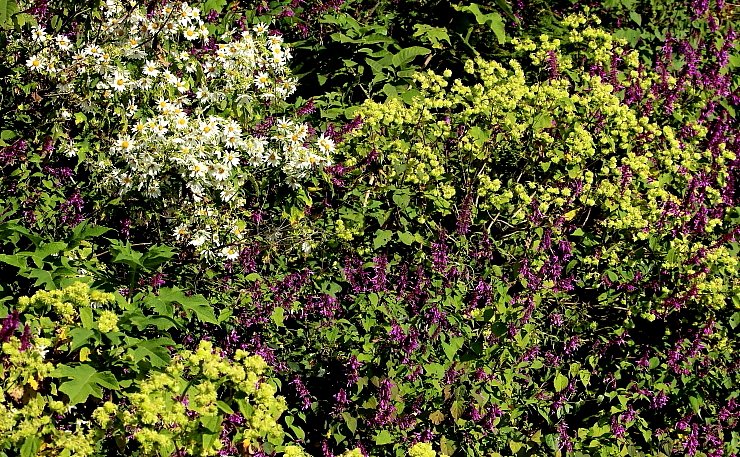
In that particular floral wall, the number of Rufous Hummingbirds was very impressive. Hummingbird photography is always difficult, but there were so many individuals of this species, that with just a bit of patience, I was bound to get some good photos. I even managed to get some good shots of their irridescent throats, which is not something I usually manage. (The sudden flash they produce throws the camera’s light settings off.) I’m hoping to have learned something permanent.
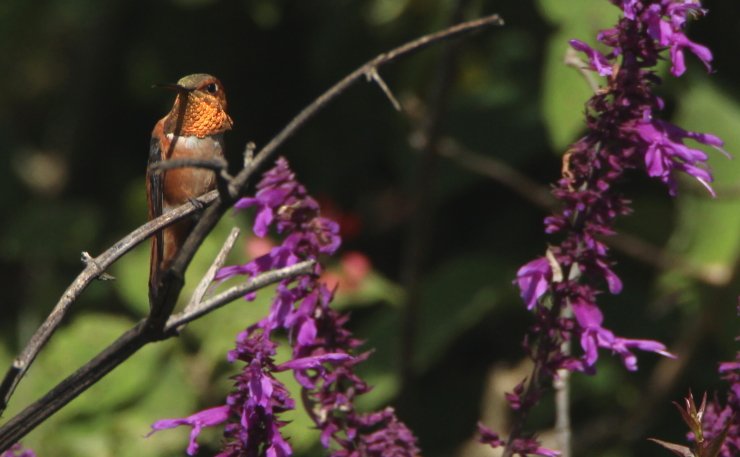 I may have come all the way from Alaska for these Salvias.
I may have come all the way from Alaska for these Salvias.
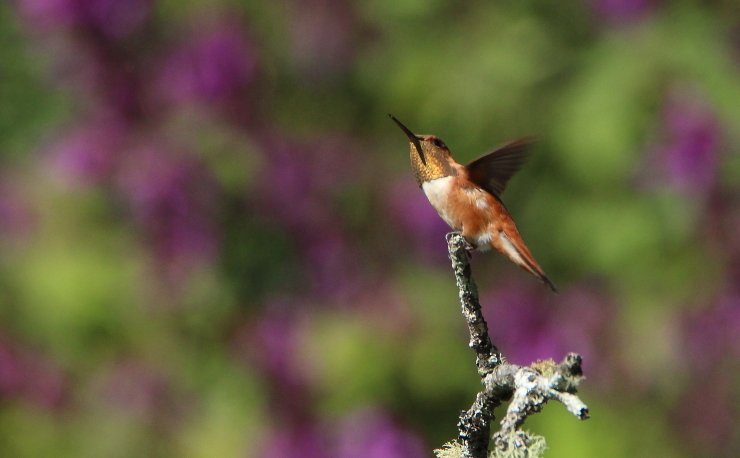 It was worth it.
It was worth it.
Once I managed to pull myself away from the Rufous Hummingbirds (and a few Broad-taileds) I came across this glittering female, which I believe was a Ruby-throated Hummingbird.
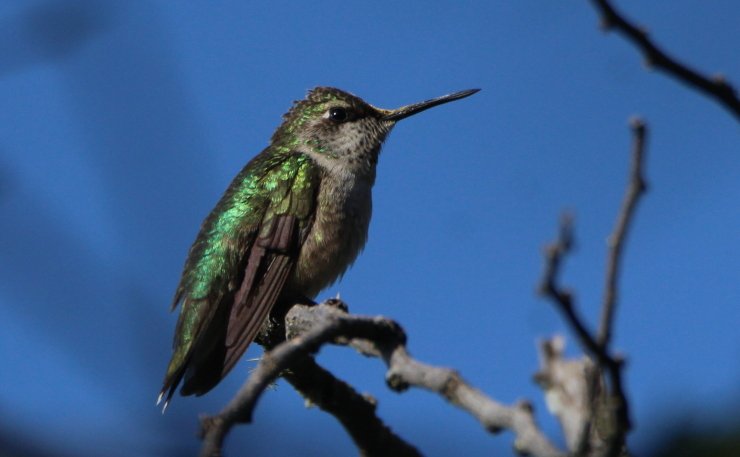 And I may have come all the way from Quebec for the same.
And I may have come all the way from Quebec for the same.
In case you are wondering, the other hummers present included quite a few Mexican Violetears, Broad-tailed Hummingbirds, Berylline Hummingbirds, and White-eared Hummingbirds. All of these species are year-round residents in Michoacán, but they somehow seem much more numerous during our floriferous fall.
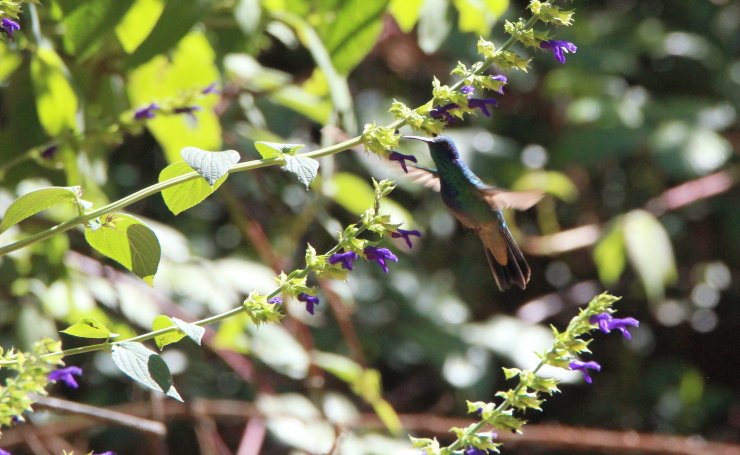 Not my best photo of a Mexican Violetear, but it is unusual to see this treetop-loving hummer feeding near the ground.
Not my best photo of a Mexican Violetear, but it is unusual to see this treetop-loving hummer feeding near the ground.
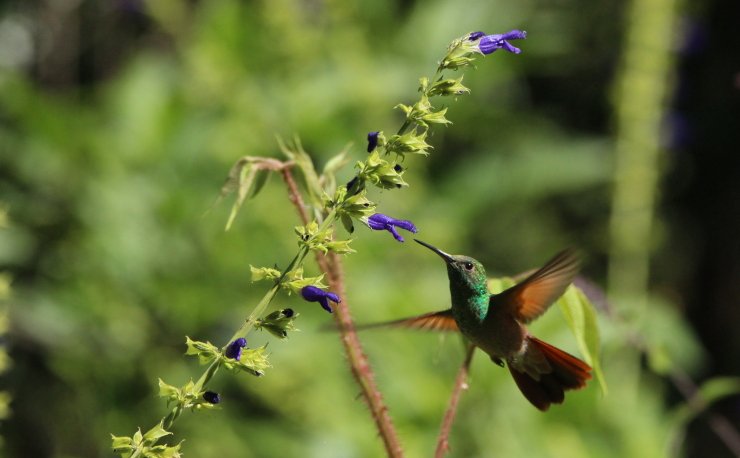
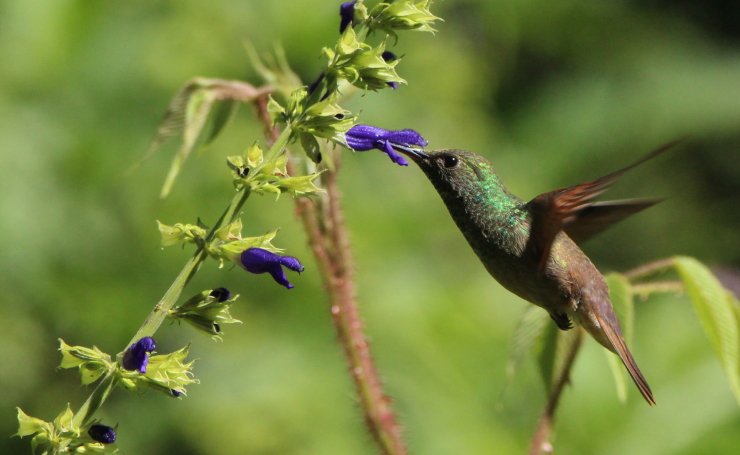 Berylline Hummingbirds, in contrast, are generous with the photo ops.
Berylline Hummingbirds, in contrast, are generous with the photo ops.
The thrill of the day, however, was a single representative of a difficult species. I suspect I may have seen quite a few female Calliope Hummingbirds over the past few years, but they look so much like those of several other species that I have probably missed most of them. So it was a tremendous satisfaction to finally see a male of this species. As we say here, No hay pierde: There is no doubt (with the males)!
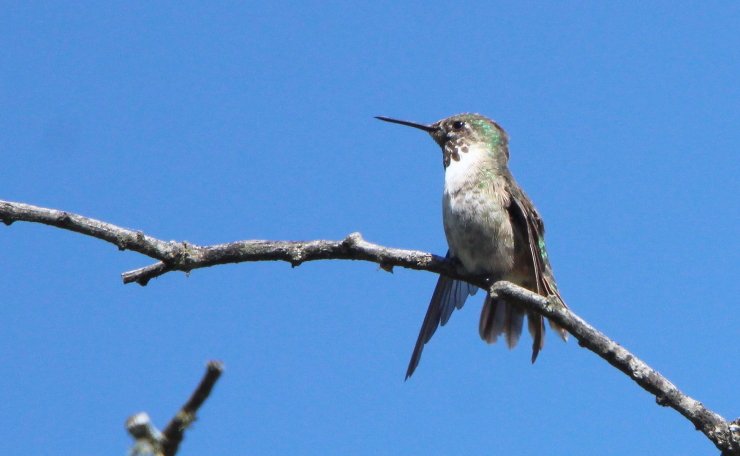
In the end, I didn’t get quite as many species in a single day as I had at Laurelito (no Bumblebee, Rivoli’s, or Black-chinned Hummingbirds.) But when you take both sites into account, and throw in some great species from the Hot Country and good numbers from my new site of Las Mesas, this is turning out to be my best hummingbird season ever.
Since I can never stick completely to a single subject, I’ll end by showing you one of the day’s two Peregrine Falcons, and an adorable Slate-throated Redstart, just for good measure. May the two never meet.
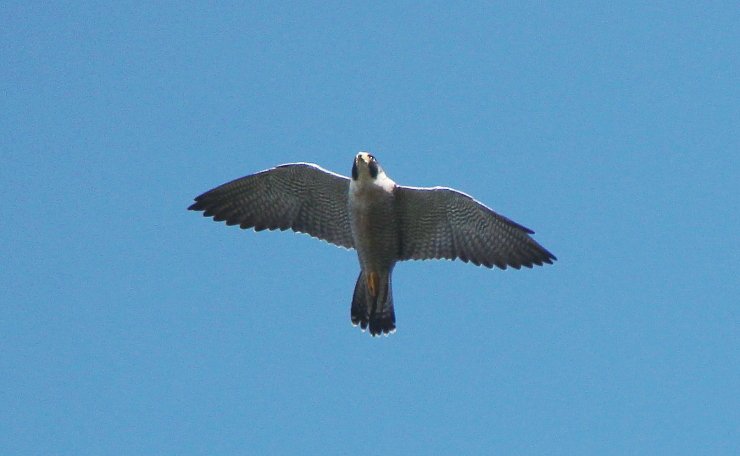
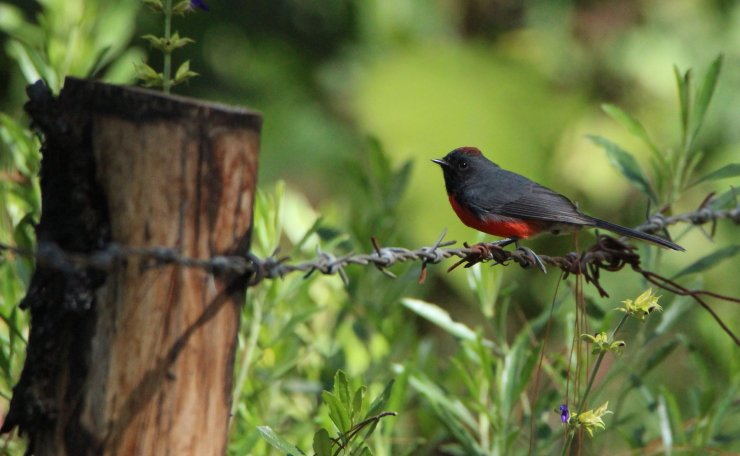











Probably the funniest closing lines from a birding post I have read in recent years.